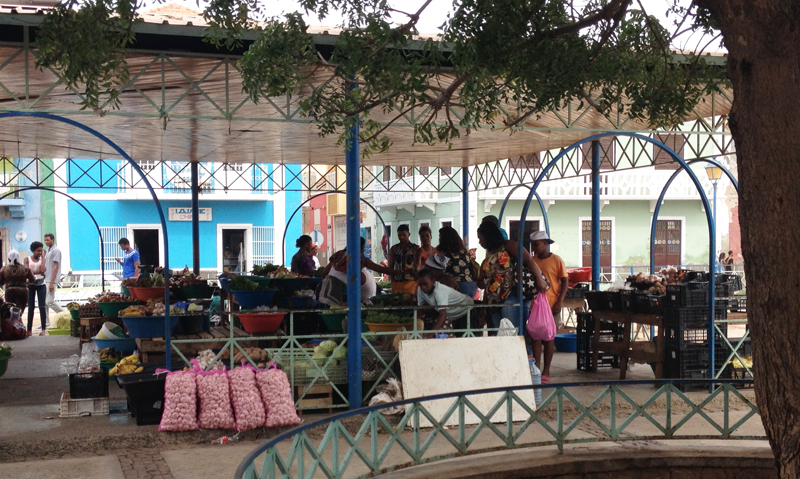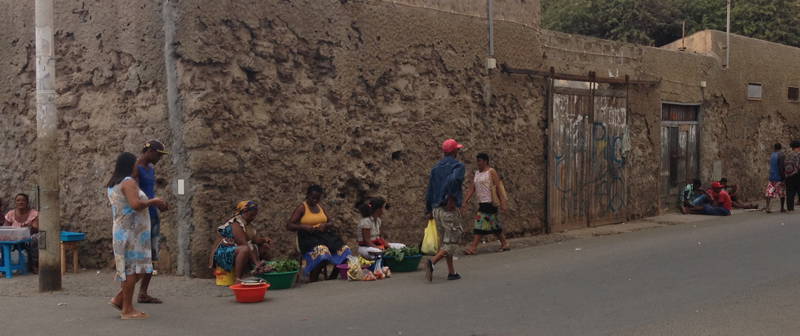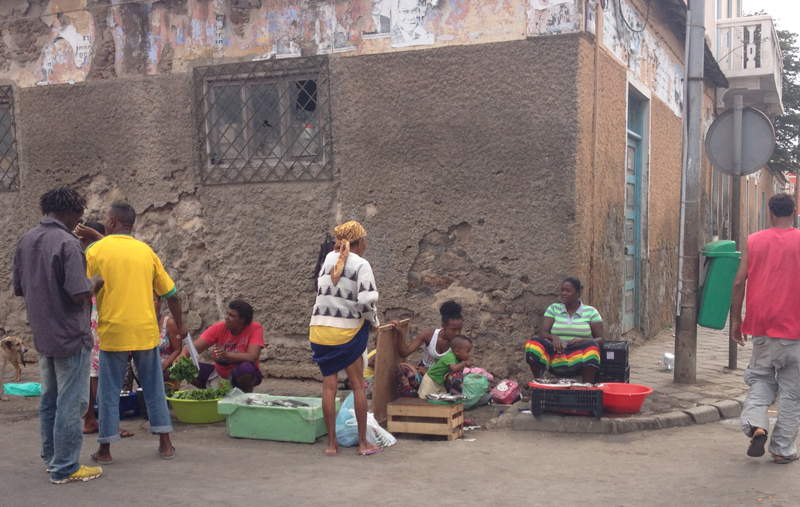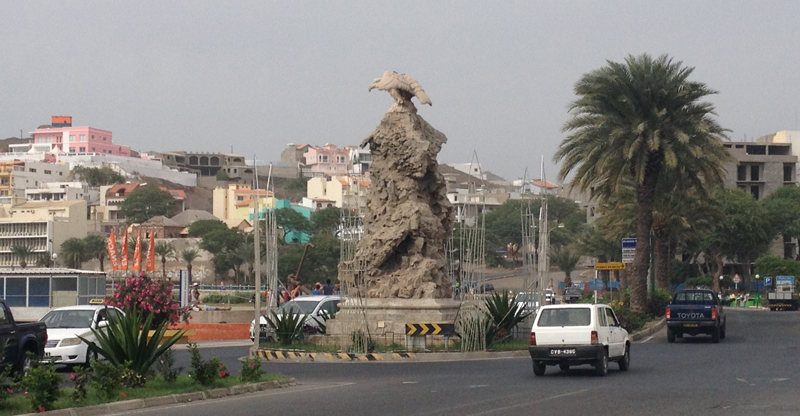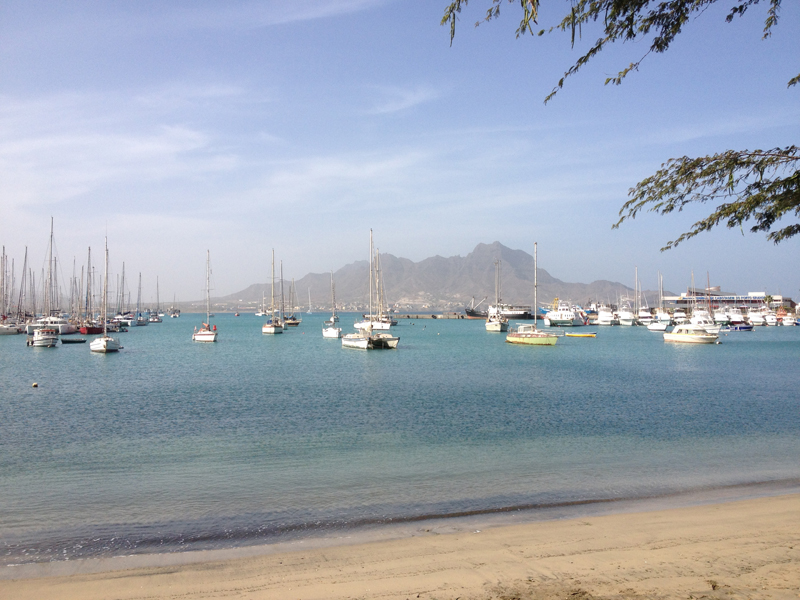by chris ayres | Dec 2014 | UK to New Zealand
I must say I didn’t really enjoy Las Palmas. Moved into the marina- took over 2 hours waiting, queuing and doing the paperwork. Then I was put in an annexe to the main marina which wasn’t very good, open to swell so suffered from surge. My first experience of bow too mooring as well, makes getting off and on the boat awkward.
Las Palmas itself so big so busy and just full of traffic and I din’t find it very interesting.
Big storm day after I moved into the marina and the weather for my stay wasn’t too good at all.
Still new crew taken on, an Austrian lady who has yachtmasters, a few jobs done on boat and restock of provisions.
by chris ayres | Dec 2014 | UK to New Zealand
Its hard getting away from these Spanish marinas early, first there is the gate keys to return and deposit refunded then fuel up with diesel , so it was 11 before we were away. Outside of the harbour our way was south, there was a fair old swell so it was a bit rolly. Later the wind picked up further, peaking at 25 to 30 knots so a lively sail. Passsed the lighthouse of Maspalomas, and all the sand dunes it was a bit quieter and we tucked into the bay by Pasito Blanco just as the sun was setting and put down the anchor for the night.
by chris ayres | Dec 2014 | UK to New Zealand
Away bright and early but hardly any wind and then none so on with the engine to motor past the cement factory imaginatively named Puerto Cementero. Here we could alter course, bound for the southern tip of Tenerife and we had some wind, a gentle SW’erly. Before long that deserted us by white horse approach from the north announced a North Easterly blow. It blew hard all afternoon and most all night with a long period of a sustained 30 knots and peaks of 35. Down to just the staysail and with big breaking seas it wasn’t really too much fun. We did have a wonderful view of the snow tipped Teide above the clouds and later a big full and bright moon.
Once under the lee of Tenerife , the sea was not so rough and the wind abated and we could see the lights of La Gomera. Just before dawn, calm, just like someone had switched the fan off. The wind returned fitfully later. As we approached La Gomera we could see what a beautiful and rugged island it is.
Eventually just after midday we rounded the big breakwater of San Sebastian harbour and thence into the marina for a berth. It looks like this place will be the perfect antidote to Las Palmas.

Approaching San Sebastian de La Gomera
by chris ayres | Dec 2014 | UK to New Zealand
On the pontoon I ran into Ollie who I had first meet in Ayamonte, he is sailing his Albin Vega from Scotland to the Caribbean single handed. It was good to meet up again and swap sea tales.
The first afternoon I walked up to the view point over the harbour and then to the lighthouse. Still had my sea legs so the earth kept moving. The town, which is very attractive, is situated where one of the barrancos of the island descends to the sea, there is only a small level area and much of the town climbs steeply up the hillside.
It seemed like my new crew couldn’t cope with shorthanded sailing so she “jumped ship” and I was on my own again.
One day I took a bus to Pajarito and then walked up to Alto de Garajonay, at 1,487m the highest point of the island. There were woods and shrubs, striking volcanic pinnacles and I heard and saw canaries singing in the bushes.
Without effort from me I had two potential crew approach with a view to crossing the Atlantic, both seemed fine so I was faced with a bit of a dilema as which to choose. In the end I solved this by deciding to take both. Bertrand, a french sailor and traveler whose has crossed before and Jason, an American who has been walking and cycling around Europe for a few years.
Sea Bear has been checked over, more provisions bought just the Saturday vegetable market to go to tomorrow morning for fresh veg and then we plan to set of for the Cape Verde Islands.
It seems fitting to be setting out from here. It was this very bay where Columbus set out from with his three ships on his voyage of discovery.
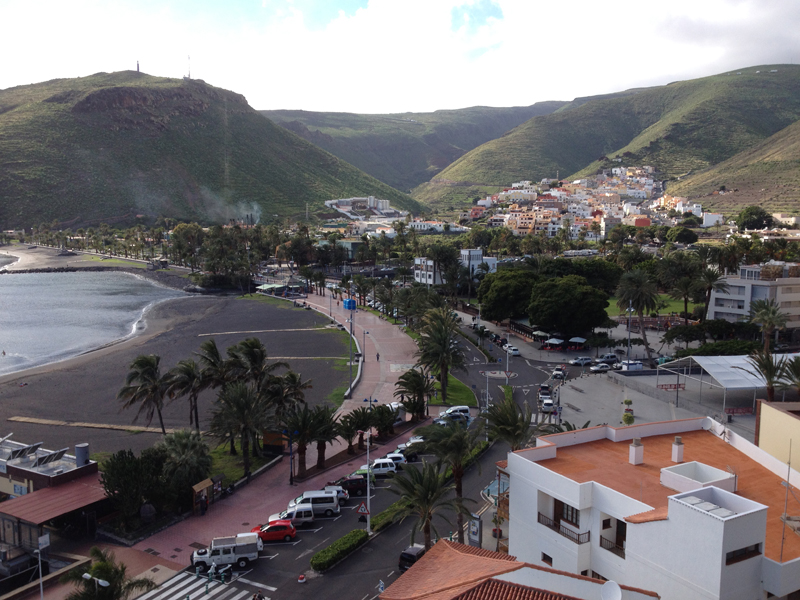
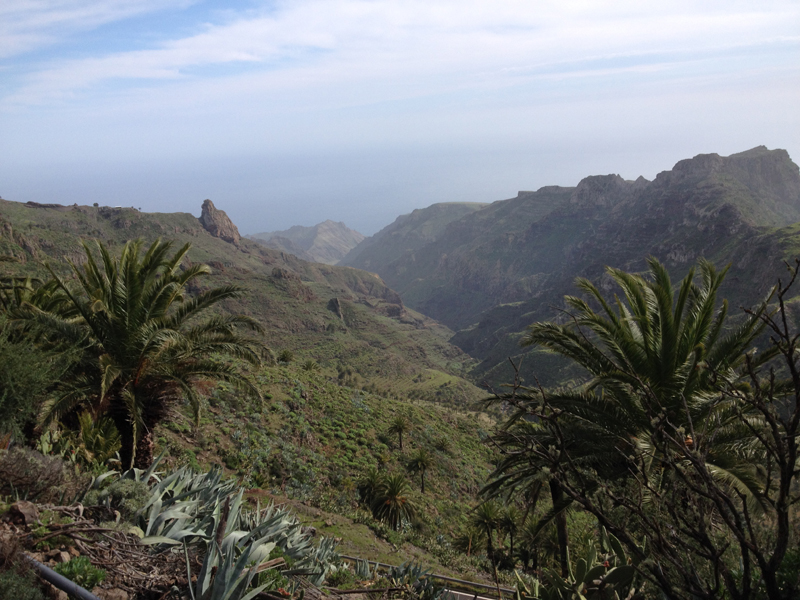
View from Vegaipala on Gomera
by chris ayres | Dec 2014 | UK to New Zealand
After shopping for fresh veg at the market, filling the tanks with water, some last minute chores and getting some exit stamps from the Canaries in the paperwork we were ready for the off, the 870 nautical miles to the Cape Verde Islands.
Ollie blew his fog horn from the marina breakwater to give us a send off. Outside of the harbour sail was set and our initial course followed the coast of La Gomera south so we could appreciate more what a wonderful island this was. Winds were light and variable at first , later clear of the island they picked up and gradually more reefs added so we ended with a triple reefed main and a reefed staysail then later just the reefed staysail with 35 knots of wind. This wasn’t what the forecast had promised at all. The seas built so motion was quite lively and our novice sailor Jason succumbed to ‘mal de mer’ so was excused watches until he recovered.
Conditions improved on the 2nd afternoon at sea, Jason was recovering so sat in on mine and Bertrand’s watches until he had been shown the ropes and we were confident he could stand watches alone. We then ran a 4 hour watch system, 8-12, 12-4, 4-8 This gave us an 8 hour break between watches so a decent sleep could be had. On this passage we did not rotate watches, I had the 4-8 watch so had both sunset and sunrise at around 6.30 but both watches had periods of dark, whereas the others had one ‘dark’ watch and one in daylight.
There was not a lot to see, no land, no other ships, After a while you could wonder if the rest of the world still existed but a sighting of a vapour trail from an airplane assured us the world was still there. There was very little bird life, just the occasional small black birds skimming the waves, I regretted not having a bird book aboard to identify it but thought it might be a sooty petrel. We had a few visits from dolphins and saw turtles and flying fish. One morning found a flying fish on the deck , it was promptly cleaned and popped into the frying pan to provide a small but very tasty morsel for breakfast. Towing a fishing line was unproductive, we lived in hope but were poor in possession.
On the morning of our 8th day out we were within 30 miles of the Cape Verde Islands, but they remained hidden in the haze from the Sahara, the boat had a fine coating of red dust on the windward side. Later the very tip of Pico du Crux on Santo Antao peaked above the haze and as we drew nearer , things though still very hazy became a little clearer. We ran down the channel between Santo Antao and Sao Vicente and turned into the bay Porte Grand where lay Mindelo. Sails handed we were soon moored bow to on a pontoon. 8 days almost to the hour after leaving the Canaries, having reckoned on at least 8 and a half days for the passage I was pleased with our passage.
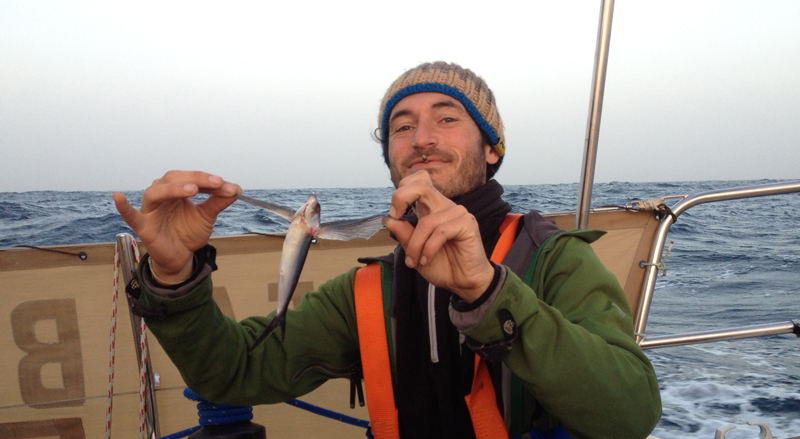
by chris ayres | Dec 2014 | UK to New Zealand
Our first night we ate ashore to save our supplies for the crossing but also to sample the local fare. We had sort of paella in a rooftop place where a traditional Cape Verde music band played – strong Senegal and Brazilian influence in the music. The town seems very relaxed.
Completed immigration and boat paperwork in the morning without too much fuss once I had found the right offices to go to. There didn’t seem to be any clear signs on doors.
Lunch was eaten at the market, had rice and some fried fish very tasty – a lively place with all sorts going on, women walking by with big baskets of fruit and veg on their heads. Very African here.
You can see that it is very poor, third world you might say, but the people are friendly and smiling.
One of the local dishes is ‘cachupa’ which is some sort of cooked grains, another staple is rice and beans and fish of course when available.
Christmas, well was different, no roast chicken and all the trimmings but we did have Christmas pudding which I had stashed in the food locker, plus custard of course. A culinary first for both my crew.
In the eve the town was really hopping, they had set up a sound system in one square near the beach, so music, people milling about all ages even the tiny tots dancing. Seemed like the whole town was parading about the streets, it was a nice atmosphere.
Friday morning I went to the maritime police and immigration to have the boat and us cleared for exit, as the offices are closed over the weekend. So tomorrow all being well with the meteo, we plan to set off for the atlantic crossing to Barbados 2000 n miles away.
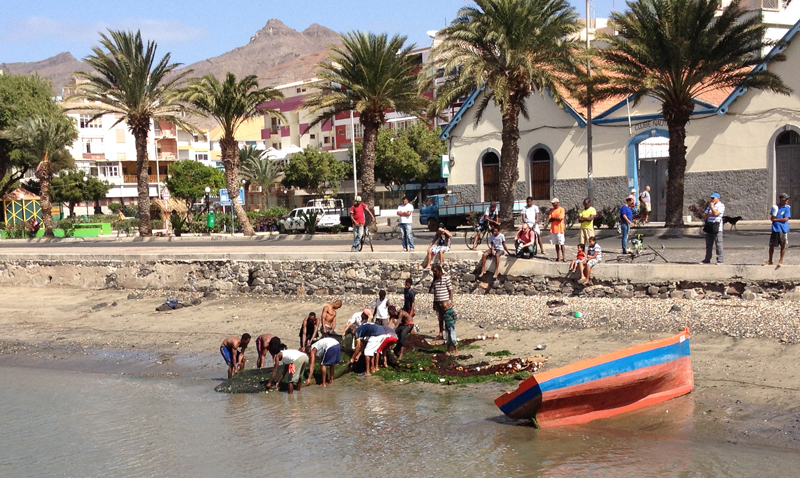
Fishing on the beach
